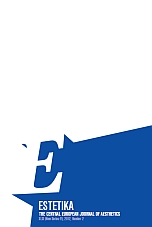Josef Čapek: The Art of Primitive Peoples; Folk Painters; What We Encounter; The Social Utility of Art
Josef Čapek: The Art of Primitive Peoples; Folk Painters; What We Encounter; The Social Utility of Art
Author(s): Pavla PečinkováSubject(s): Philosophy
Published by: Helsinki University Press
Keywords: Čapek J.; primitivism; ethnic art; modernism
Summary/Abstract: Josef Čapek’s writings from between 1914 and 1920 present a distinctive conception of primitivism, which was, beginning in the early twentieth century, of fundamental importance for the development of modern trends in the fine arts, in connection with the essential change in understanding the term ‘art’. Two manuscript version of the essay Umění přírodních národů (The art of primitive peoples) from 1914 to 1916 and the article ‘Sochařství černochů’ (Negro sculpture) from 1918 are amongst the first European critical attempts to interpret ethnic art. Čapek presents the ‘art of the savages’ (divošské umění) as fully fledged art, and he tries to analyse its principles of expression. He compares them to current trends in art. The essays from the volume Nejskromnější umění (The humblest art, 1919–20), which consider other dimensions of primitivism, present a particular definition and expansion of the term ‘art’. In contrast to academic virtuosity, Čapek here emphasizes values of hitherto peripheral and unacknowledged areas of artistic expression, and achieves a distinctively personal revision of the traditional conception of the boundaries of the work of art and therefore also its essence and purpose. The essay ‘Sociální užitečnost umění’ (The social utility of art, 1919) also relates to these questions.
Journal: Estetika: The European Journal of Aesthetics
- Issue Year: XLIX/2012
- Issue No: 1
- Page Range: 71-108
- Page Count: 38
- Language: English

